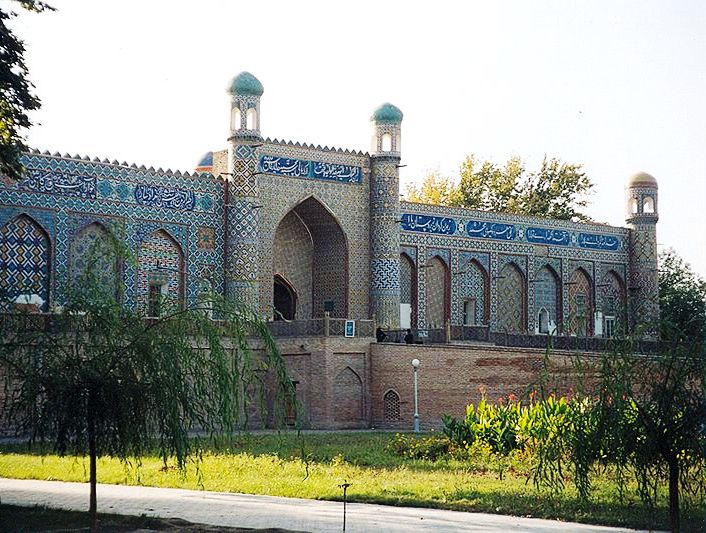The historical backdrop of Modari-khan catacomb is associated with the Nadira-the acclaimed Uzbek poetess. The spouse and the mother of Kokand khans, she kept on assuming a remarkable part in the life of the court even after the demise of her significant other. Her verses turned into the most significant ownership of the Uzbek verse, while the structures developed by her requests have turned into the primary attractions of Kokand. At the point when quite a while later after the demise of Nadira's better half Umarkhan – the leader of Kokand, his mom likewise passed away, the poetess, as it befitted an ardent little girl in-law, requested to develop a catacomb over the tomb of her significant other's mom. Before long Modari-khan sepulcher turned into the internment vault for every one of the ladies of the khan's kinfolk. The engineering complex incorporated a domed development with an entry, a recognition mosque, and a fenced yard where headstone was put. In any case, subsequent to the development of the catacomb two centuries back, there has survived just an awesome passage structure. A little entry with a low arch and delicate vegetal trimming of majolica adornment encircling the principle passageway make the building look rich and well-proportionate. Curved corner over the principle passageway is loaded with a course of snow-white ganch (gypsum mortar) stalactites. Two facetted towers flanking the façade promptly infer the pictures of Bibi-khanym mosque in Samarkand as though suggesting the way that both structures were committed to extraordinary ladies. To one side, on one of the hexahedral tiles, the planner left the date the tomb was developed – Hijra year of 1241 (1825). A legend says that kulol-ceramists from Rishtan, and additionally neighborhood ganch fretwork experts participated in design of Modari-khan catacomb. The most vital in the style of the sepulcher is a stunning adornment of the internal vault. The skilled workers secured it with ribbed helix design made of ganch. Helix is a standout amongst the most ancient components known from pre-Islamic time. Madari-khan sepulcher really turned into the entombment vault for Nadira herself. In the 1840s the Kokand khans pursued consistent battle against Bukhara rulers for the responsibility for valleys and desert gardens. In 1842 Kokand fell under the onset of the adversary. Townspeople and workers couldn't leave themselves to losing flexibility and autonomy.

